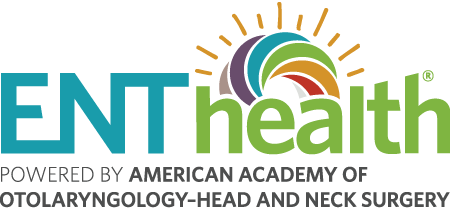Surgery for Obstructive Sleep Apnea
An estimated one in five Americans have some degree of obstructive sleep apnea (OSA). OSA is a serious health condition characterized by repeated stopping or slowing of breathing due to airway collapse. This can occur hundreds of times while you sleep, reducing your quality of sleep and making you feel tired during the day. Untreated OSA can contribute to high blood pressure, stroke, heart disease, workplace or motor vehicle accidents, and significant loss of productivity.
Medical and surgical options are available for the management of snoring and OSA. Medical options include continuous positive airway pressure (CPAP) treatment, oral appliance therapy, positional therapy, and weight loss. Treatment effectiveness depends on how long and how consistently you follow your doctor’s plan. When medical management is inadequate, well-selected surgical procedures can help reduce the severity of the disorder, support medical therapy, or even lead to a cure.
What Are the Treatment Options?
Nose—Nasal obstruction contributes to snoring, disrupted sleep, and worsening OSA, and can cause medical treatments such as CPAP and oral appliance therapy to fail. Nasal obstruction may be caused by allergies, polyps, a deviated septum, enlarged adenoids, an enlarged inferior turbinate (turbinates are finger-like structures in your nose that heat and moisten the air you breathe), nasal valve collapse, or a high-arch hard palate (the roof of your mouth) with a narrow bottom to your nasal passageway.
First-line medical treatment starts with nasal spray and allergy management. Structural problems like those mentioned above can benefit from surgical treatment. One simple option called radiofrequency turbinate reduction (RFTR) can be performed in the office under local anesthesia. Other procedures are performed under general anesthesia in the operating room, and patients usually go home the same day.
Upper Throat (palate, tonsils, uvula)—This reconstructive surgery widens the throat by repositioning the palate and throat muscles, sometimes along with tissue removal. In children and some adults who have OSA with enlarged tonsils and/or adenoids, a tonsillectomy and/or adenoidectomy can resolve snoring, sleep apnea, and associated symptoms.
Additionally, there are now procedures to help preserve airway muscle and strengthen your soft palate using sutures. The surgery is performed in an operating room under general anesthesia, usually with an overnight hospital stay. Recovery varies depending on the patient and which procedures are performed. Most patients return to school or work in two weeks with normal diet and activity. Throat discomfort with swallowing is common in the first two weeks, and can be managed with pain medication. Although serious complications are uncommon, risks include bleeding, swallowing problems, and complications with anesthesia.
Lower Throat (back of tongue and upper part of voice box)—The lower part of the throat is a common area of airway collapse in patients with OSA. The base of the tongue may be larger than normal, especially in obese patients, and can block this area. The tongue may also collapse during sleep with the lack of muscle tone, particularly if someone sleeps on their back. The epiglottis, or upper part of the voice box, may also collapse and contribute to airway obstruction.
Skeletal—Since airway muscles are supported by the jaw, the orientation or position of the jaw bones affect the opening and stability of the airway during sleep. Patients with complete upper airway collapse during sleep, or a retracted jaw position, may benefit from a “maxillomandibular advancement” (MMA) surgical procedure. If the problem is limited to the upper jaw, where it is too narrow for the tongue and soft palate, the upper jaw can be widened in both children and adults.
When MMA is performed properly, it provides a reliable and high surgical success rate. Current techniques allow patients to quickly return to regular chewing function. Patients may also benefit from improved bite—how their teeth come together—and facial balance. It is highly recommended that these procedures be performed by an experienced surgeon for optimal results, so patients can return to their normal function usually within two to three weeks.
Are there Additional Treatment Options?
Procedures are available to reduce the size of the tongue base, or “advance” the tongue to keep the airway open. “Hypoglossal nerve stimulator” is a treatment where an ENT (ear, nose, and throat) specialist, or otolaryngologist, implants a pacemaker in the neck for the nerve that activates the tongue, stiffening and stabilizing the tongue and throat during sleep. As with palate surgery, these procedures are patient-specific depending on the nature of your airway, and can be assessed during an airway endoscopy.
These procedures are done under general anesthesia, often with overnight hospital observation. Recovery and risks vary depending on the procedure(s) performed, but are generally similar to procedures performed in the upper throat.
What Questions Should I Ask My Doctor or Surgeon?
It is important to consult with a surgeon who has sleep surgery experience. Talk to an ENT specialist for a complete evaluation, and to learn what treatment may be best for you. Sleep apnea surgery can significantly improve your health and quality of life, and you may want to consider questions like these when talking to your ENT specialist:
- What are some treatment options that you can recommend for my health and lifestyle?
- Do I qualify for a minor, outpatient procedure to help address my snoring or nasal obstruction, or do I need a more involved procedure?
- What would my recovery time be like?
- What if I choose to do nothing right now?
- Can you describe your sleep surgery and sleep medicine training and experience?
SLEEP APNEA VIDEOS
Dr. D. Scott Fortune provides an overview of surgery obstructive sleep apnea.
Learn more about your obstructive sleep apnea.
Related Conditions
The information on ENThealth.org is provided solely for educational purposes and does not represent medical advice, nor is it a substitute for seeking professional medical care.
Copyright 2025. American Academy of Otolaryngology–Head and Neck Surgery Foundation

